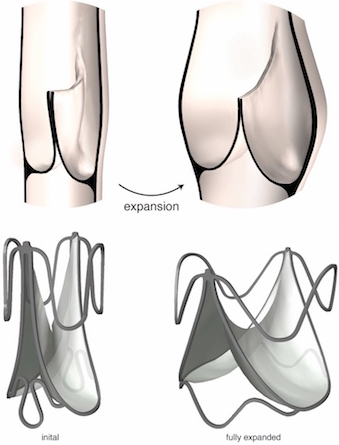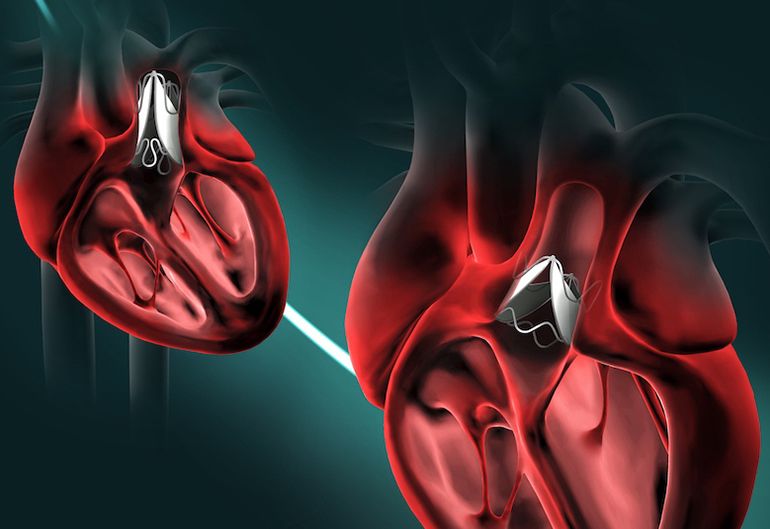A variety of congenital cardiac abnormalities require the placement of prosthetic heart valves in very young children. As the hearts grow, the valves have to be replaced through repeated surgeries.
A team of researchers from Harvard and Boston Children’s Hospital have now developed an artificial valve that can be expanded, via a minimally invasive transcatheter procedure, to compensate for the growing lumen within which it sits. Such adjustment procedures are a lot easier on the patients and considerably cheaper to perform.

While existing prosthetic heart valves usually have three leaflets, this valve relies on two leaflets, similar to how venous valves operate in our legs. Since they are designed to adapt to expanding and contracting vessel size, the same approach works well for pediatric valves. “Veins carry approximately 70 percent of our blood volume, and their dimensions can change dramatically depending on body position,” said Sophie Hofferberth, MD, a leader of the research, in a Boston Children’s Hospital press release. “We mimicked the geometric profile of the human venous valve to design a bileaflet heart valve of programmed dimensions that is adaptable to growth without loss of one-way flow control.”
The device has already been tried in sheep who were implanted with the new valve and allowed to grow, and the valve performed as expected, correctly functioning through the cardiac cycle to open and close blood flow access while being able to be repeatedly adjusted throughout the study.
Clinical trials are expected to be conducted on the new valve fairly soon, as such capabilities would have a significant impact on hundreds of thousands of children.
Some additional details about the findings, according to Boston Children’s:
In multiple rounds of testing, valve prototypes were able to expand to accommodate growth and structural asymmetries within the heart. They remained fully functional across a range of dimensions, pressures, and flow rates.
Because the valve can expand without requiring the frame and leaflet to stretch or enlarge, it is compatible with a range of off-the-shelf materials, the researchers say. The researchers successfully and safely expanded the device at multiple timepoints in a growing sheep model, using a balloon catheter.
The researchers also observed that the bileaflet heart valve design encourages good blood flow through the valve. This could potentially reduce the risk for blood clots, a complication often seen with existing prosthetic valves. The team saw no evidence of blood clot formation in the growing sheep model over 10 weeks of observation, even without the use of blood-thinning medication typically given to prosthetic valve recipients.
Story Source:
Medgadget. Note: Content may be edited for style and length.

